watersteps
Newbie level 4
I have a 24 volt dc battery that I want to use on an 18 and 20 volt tool. I have built an adapter to mount the 20 volt tool to the battery. When I mount the tool on the adapter and then on the 24 volt battery nothing happens. Well the light on the tool goes out when I pull the trigger.
Lets go back to the beginning, I have several 24 volt SunJoe and SunSnow batteries, I also have several 10 and 20 volt DeWalt power tools that I could use extra batteries for. No one that I know of makes an adapter for this use. So I built an adapter out of a 2amphour Dewalt battery by removing the batteries and charging electronics board. I purchased a DIY adapter for the SunJoe 24 volt battery. This adapter is bolted to the 2amphour battery casing and wired the positive and negative wires from the DIY adapter to the connections in the 2 amphour adapter.
I have been told that if the DeWalt tools were brush type tools this would work fine, but they are not brush type tools. So, can I install a voltage regulator to reduce the voltage from 24 to 20 and maybe even 18 volts??
I have attached some pictures to help explain what I am doing.
I will add this info that may help find an answer. I have an adapter from DeWalt that allows me to use 20 volt batteries on 18 volt tools. The adapter works just fine. I opened this adapter up and find a small electronics board with these items mounted to it. One small round can with 100-35v-VT printed on it and another small can with 220-16v-VT printed on it, a small coil of copper wire with 220 printed on it. It also has a usb connection on the board.
Lets go back to the beginning, I have several 24 volt SunJoe and SunSnow batteries, I also have several 10 and 20 volt DeWalt power tools that I could use extra batteries for. No one that I know of makes an adapter for this use. So I built an adapter out of a 2amphour Dewalt battery by removing the batteries and charging electronics board. I purchased a DIY adapter for the SunJoe 24 volt battery. This adapter is bolted to the 2amphour battery casing and wired the positive and negative wires from the DIY adapter to the connections in the 2 amphour adapter.
I have been told that if the DeWalt tools were brush type tools this would work fine, but they are not brush type tools. So, can I install a voltage regulator to reduce the voltage from 24 to 20 and maybe even 18 volts??
I have attached some pictures to help explain what I am doing.
--- Updated ---
I will add this info that may help find an answer. I have an adapter from DeWalt that allows me to use 20 volt batteries on 18 volt tools. The adapter works just fine. I opened this adapter up and find a small electronics board with these items mounted to it. One small round can with 100-35v-VT printed on it and another small can with 220-16v-VT printed on it, a small coil of copper wire with 220 printed on it. It also has a usb connection on the board.
Attachments
-
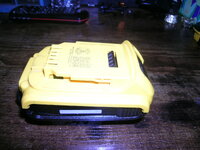 DSCN9162.JPG912.8 KB · Views: 47
DSCN9162.JPG912.8 KB · Views: 47 -
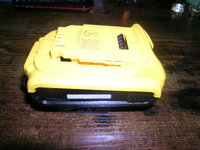 DSCN9163.JPG873.8 KB · Views: 49
DSCN9163.JPG873.8 KB · Views: 49 -
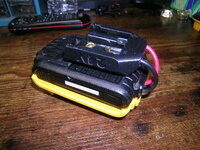 DSCN9166.JPG1 MB · Views: 51
DSCN9166.JPG1 MB · Views: 51 -
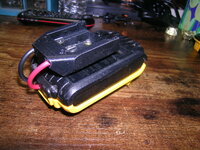 DSCN9167.JPG1 MB · Views: 52
DSCN9167.JPG1 MB · Views: 52 -
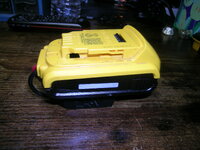 DSCN9168.JPG950.4 KB · Views: 51
DSCN9168.JPG950.4 KB · Views: 51 -
 DSCN9169.JPG1 MB · Views: 51
DSCN9169.JPG1 MB · Views: 51 -
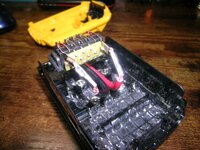 DSCN9170.JPG996.5 KB · Views: 49
DSCN9170.JPG996.5 KB · Views: 49 -
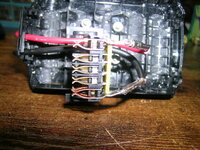 DSCN9171.JPG1,012.6 KB · Views: 50
DSCN9171.JPG1,012.6 KB · Views: 50 -
 DSCN9172.JPG837.9 KB · Views: 51
DSCN9172.JPG837.9 KB · Views: 51 -
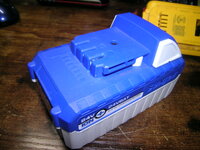 DSCN9173.JPG963 KB · Views: 51
DSCN9173.JPG963 KB · Views: 51
Last edited: